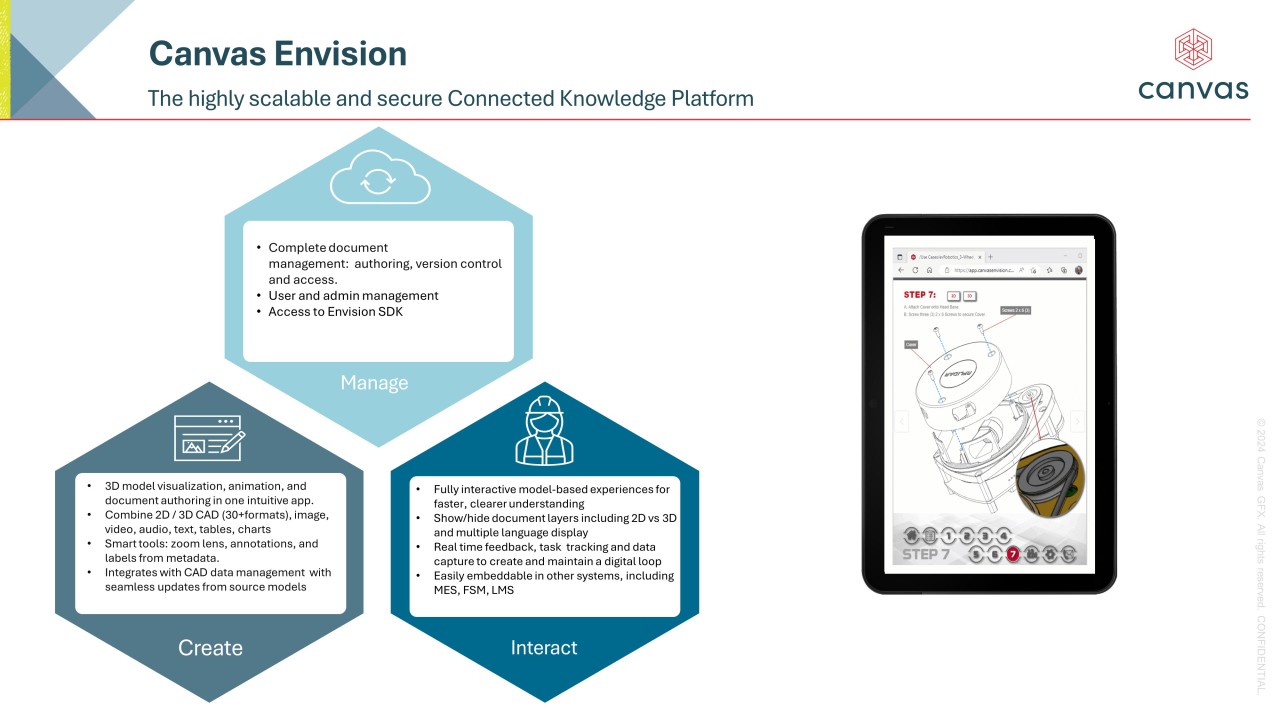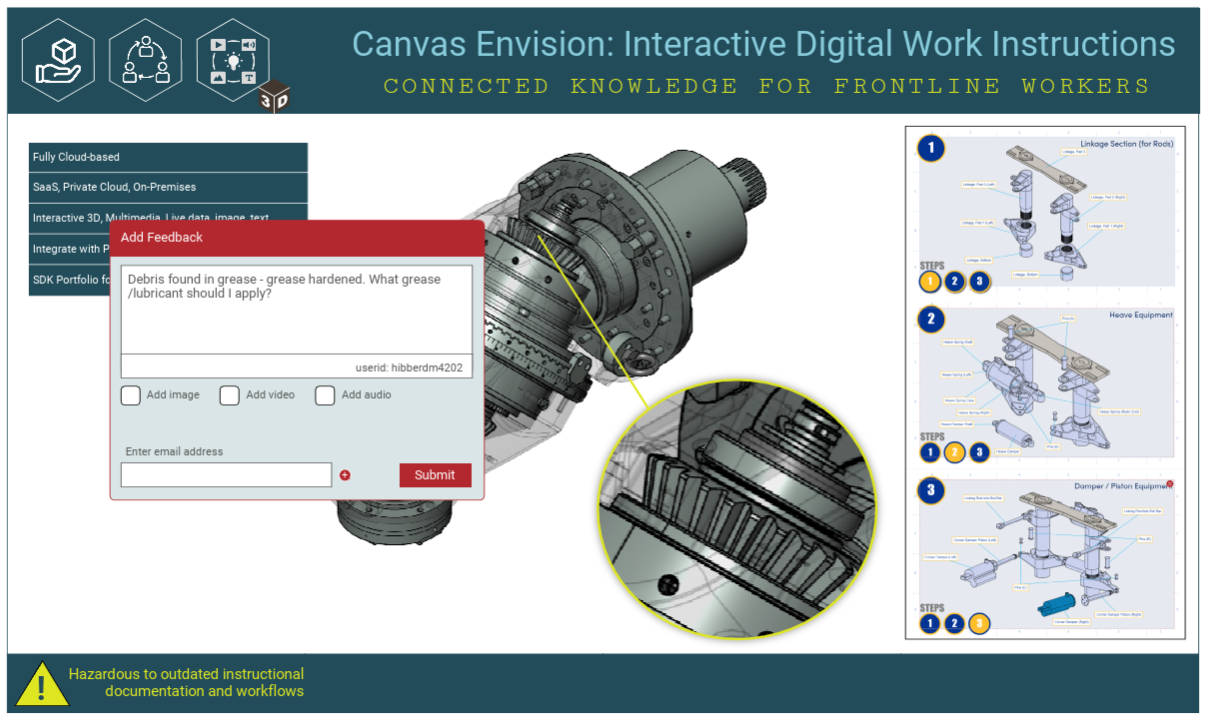 In our update briefing with Canvas GFX, CEO Pat Hume said, “A lot has changed since a year ago.” Perhaps the most significant strategic shift is that they are now focusing Envision as a connected knowledge platform for midsize and larger enterprises. The concept is two-way knowledge sharing between product engineering and production frontline workers making and repairing those products.
In our update briefing with Canvas GFX, CEO Pat Hume said, “A lot has changed since a year ago.” Perhaps the most significant strategic shift is that they are now focusing Envision as a connected knowledge platform for midsize and larger enterprises. The concept is two-way knowledge sharing between product engineering and production frontline workers making and repairing those products.
Product information is central to what frontline workers need to do, and Canvas GFX has long played a role in the 2D and 3D product info-sharing business. Canvas Envision is a SaaS platform for creating, managing, and interacting with model-based work instructions. Outdated, unclear, or hard-to-understand work instructions are a common cause of quality issues for manufacturers. Canvas GFX is looking to solve this challenge.
The platform can convert text-based work and maintenance instructions to easy-to-follow visual information linked to the CAD model. Based on the company’s heritage, using 3D CAD models as the single source of truth is a given. What’s novel is the company’s view that the frontline workers in production, quality, maintenance, and sustainment can use the Canvas Envision platform to deliver feedback to the product teams and each other. The platform enables workers to ask for help or support. For example, If the instructions don’t seem to match the parts referenced in the CAD model, a maintenance worker who may work for a different company, such as an airline, can connect with the engineering team at the OEM for guidance.
To gain a foothold in the midmarket and enterprise, Canvas GFX knows they must be minimally disruptive and complement or enhance existing workflows. APIs to PLM, PDM, ERP, QMS, and MES are table stakes. Canvas GFX works with digital twins, animations, images, video, audio, text, live data feeds, and AR/VR to extend the value of the core CAD model.
Another fascinating direction is that Canvas GFX has established Envision partnerships with companies such as Aras and Rockwell Plex to embed Envision in the partner’s user experience. So, an Aras PLM user can author in Canvas Envision, launching it from their Aras Innovator interface. Similarly, a production worker on Plex can interact with their work instructions in Envision but see the familiar Plex UI. Other partners include SAIC for DoD, SSI for shipbuilding, Autodesk with the Vault PDM, Zebra for connected workers, and Microsoft for AI. Partners will be an increasing channel to market for Canvas Envision.
The Canvas Envision SDK is intended to allow customers to automate content creation and customize user experiences. Depending on the current technology stack, each company may want the system to do more or less for authoring and frontline worker support. The company’s AI roadmap, with products due out later this year, will enable greater automation.
Per the example above, Canvas GFX’s vision for Envision goes even beyond enterprise, out to customers, customer’s customers, and suppliers. Many very complex products, for which model-based work instructions are most important, have a set of sub-assemblies where product information is needed. Many of these complex products also have long lives in the field, where service or maintenance, repair, and overhaul operations (MRO) might also need detailed product knowledge and have valuable knowledge to share from later in the product lifecycle.
We are excited by the opportunities Canvas Envision offers to manufacturers to move toward a model-based enterprise (MBE) using CAD data for frontline workers. As the workforce challenges continue, supporting frontline workers and improving collaboration across many disciplines should improve employee satisfaction and productivity rates. Thank you, Patricia Hume and Becky Darsch, for taking the time to update us on Envision and your market strategy. We look forward to learning more and hearing about AI updates and additional partners and customers!
Thank you, Patricia Hume and Becky Darsch, for taking the time to update us on Envision and your market strategy. We look forward to learning more and hearing about AI updates and additional partners and customers!

